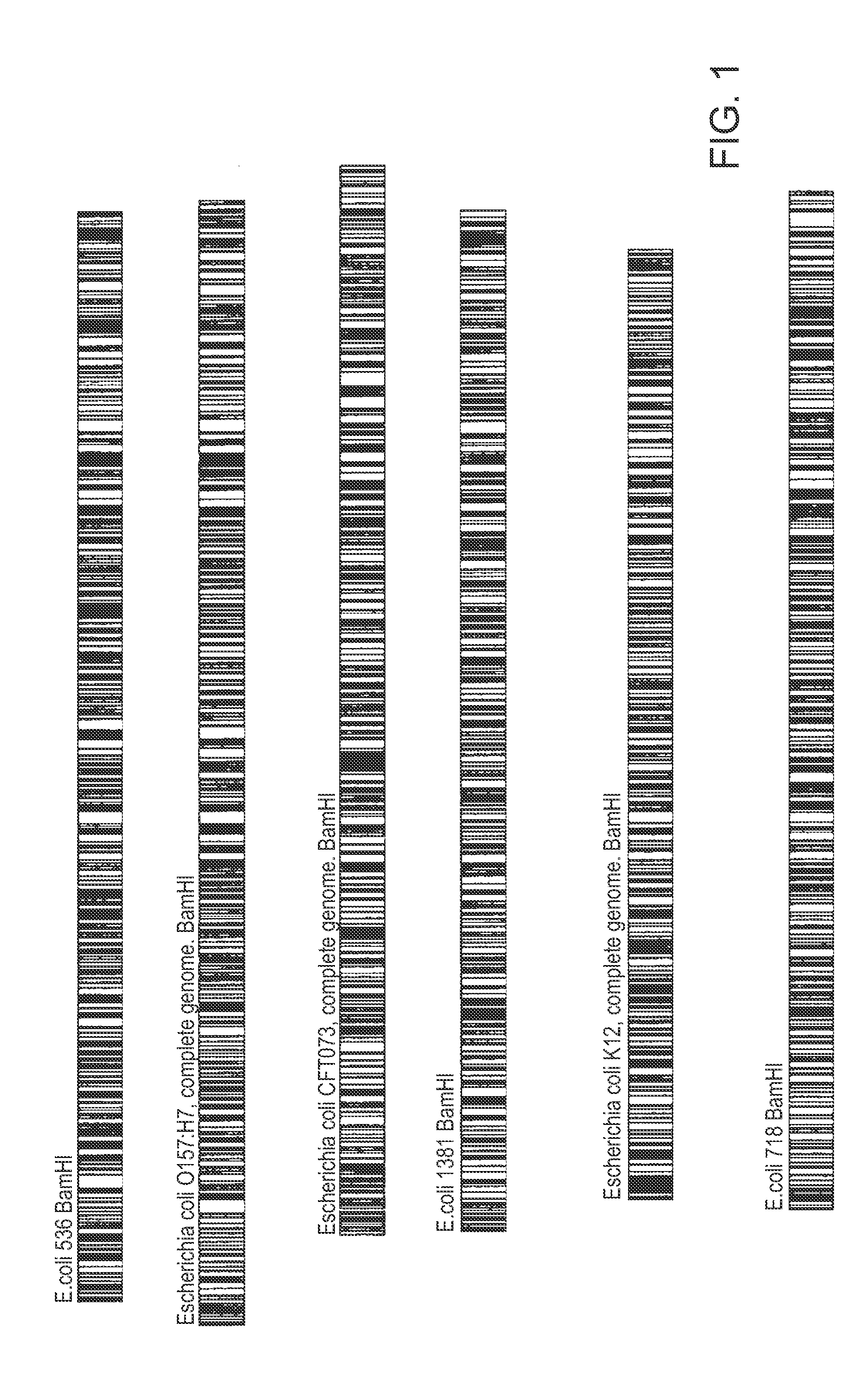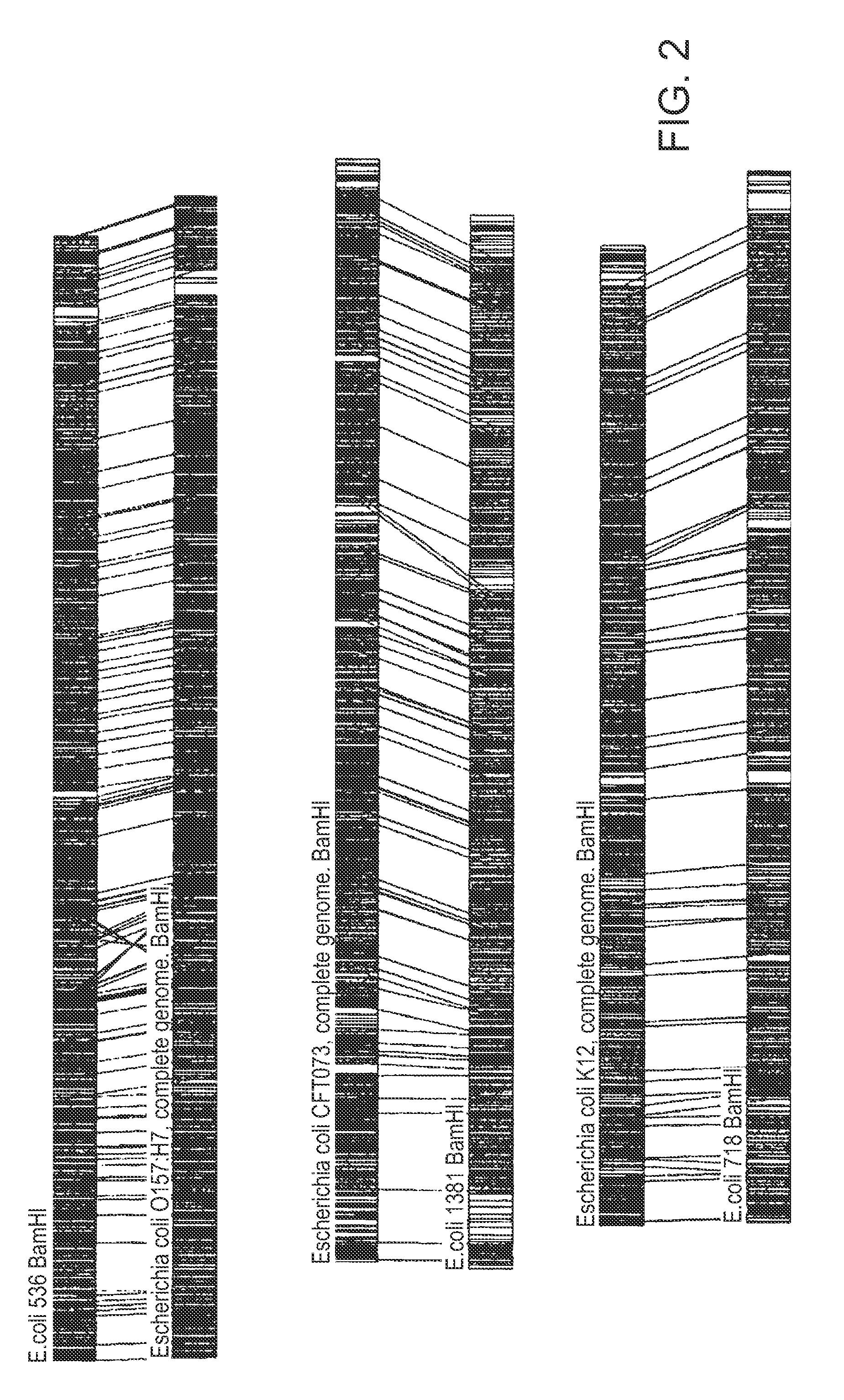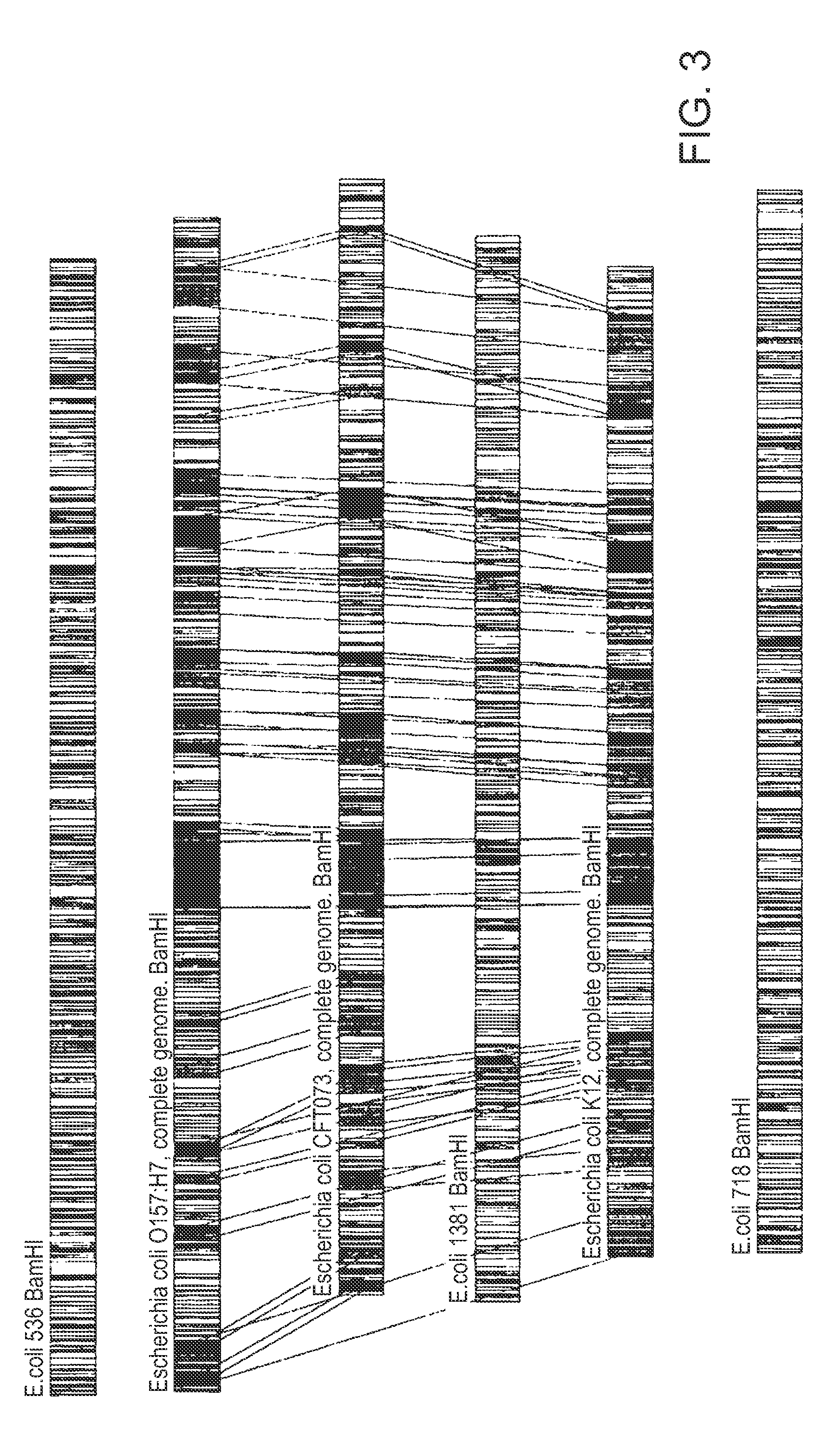Methods of categorizing an organism
- Summary
- Abstract
- Description
- Claims
- Application Information
AI Technical Summary
Benefits of technology
Problems solved by technology
Method used
Image
Examples
example 1
Microbial Identification Using Optical Mapping
[0059]Microbial identification (ID) generally has two phases. In the first, DNA from a number of organisms are mapped and compared against one another. From these comparisons, important phenotypes and taxonomy are linked with map features. In the second phase, single molecule restriction maps are compared against the database to find the best match.
[0060]Database Building and Annotation
[0061]Maps sufficient to represent a diversity of organisms, on the basis of which it will be possible to discriminate among various organisms, are generated. The greater the diversity in the organisms in the database, the more precise will be the ability to identify an unknown organism. Ideally, a database contains sequence maps of known organisms at the species and sub-species level for a sufficient variety of microorganisms so as to be useful in a medical or industrial context. However, the precise number of organisms that are mapped into any given data...
example 2
Using Multiple Enzymes for Microbial Identification
[0068]In one embodiment, the single molecule restriction maps from each of the enzymes will be compared against the database described in Example 1 independently, and a probable identification will be called from each enzyme independently. Then, the final match probabilities will be combined as independent experiments. This embodiment will provide some built-in redundancy and therefore accuracy for the process.
INTRODUCTION
[0069]In general, optical mapping can be used within a specific range of average fragment sizes, and for any given enzyme there is considerable variation in the average fragment size across different genomes. For these reasons, it typically will not be optimal to select a single enzyme for identification of clinically-relevant microbes. Instead, a small set of enzymes will be chosen to optimize the probability that for every organism of interest, there will be at least one enzyme in the database suitable for mappin...
example 3
Identification of E. coli
[0076]A. In one embodiment of a microbial identification method, nucleic acids of between about 500 and about 1,000 isolates will be optically mapped. Then, unique motifs will be identified across genus, species, strains, substrains, and isolates. To identify a sample, single nucleic acid molecules of the sample will be aligned against the motifs, and p-values assigned for each motif match. The p-values will be combined to find likelihood of motifs. The most specific motif will give the identification.
[0077]B. The following embodiment illustrates a method of identifying E. coli down to an isolate level. Restriction maps of six E. coli isolates were obtained by digesting nucleic acids of these isolates with BamHI restriction enzyme. FIG. 1 shows restriction maps of these six E. coli isolates: 536, O157:H7 (complete genome), CFT073 (complete genome), 1381, K12 (complete genome), and 718. As shown in FIG. 2, the isolates clustered into three sub-groups (strain...
PUM
| Property | Measurement | Unit |
|---|---|---|
| Fraction | aaaaa | aaaaa |
| Fraction | aaaaa | aaaaa |
| Fraction | aaaaa | aaaaa |
Abstract
Description
Claims
Application Information
 Login to View More
Login to View More - R&D
- Intellectual Property
- Life Sciences
- Materials
- Tech Scout
- Unparalleled Data Quality
- Higher Quality Content
- 60% Fewer Hallucinations
Browse by: Latest US Patents, China's latest patents, Technical Efficacy Thesaurus, Application Domain, Technology Topic, Popular Technical Reports.
© 2025 PatSnap. All rights reserved.Legal|Privacy policy|Modern Slavery Act Transparency Statement|Sitemap|About US| Contact US: help@patsnap.com



